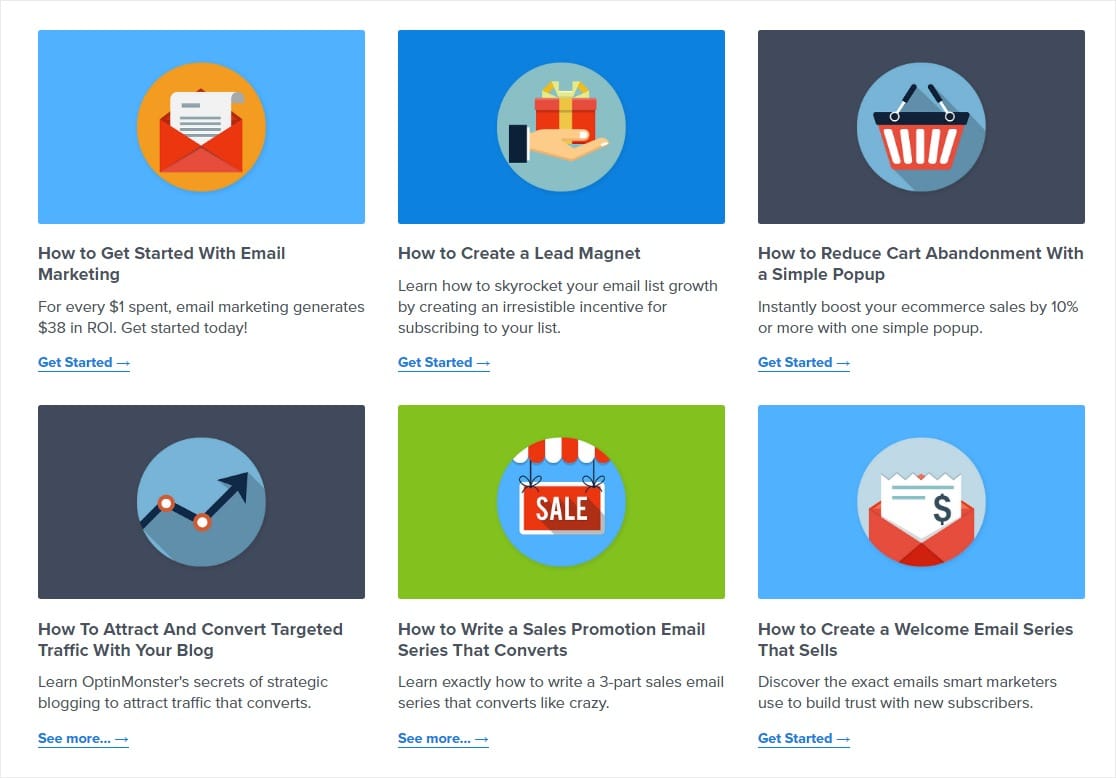How to Start a WordPress Blog and Earn Money with It
Choosing a Niche for Your WordPress Blog
Starting a blog is exciting, but choosing a niche can be daunting. Your niche is your blog’s topic, the area you will focus on and become an expert in. It’s important to choose a niche that you’re passionate about and can sustain over time. Here are some steps to help you choose the perfect niche for your WordPress blog.
1. Brainstorm Ideas
Start by brainstorming ideas for your blog. What are your hobbies, interests, and passions? What topics do you enjoy reading about? Write down as many ideas as possible.
2. Research the Competition
Once you have a list of ideas, research the competition in each niche. Use tools like Google Keyword Planner, SEMrush, and Ahrefs to see how popular each niche is and how many other blogs are already covering it. Look for gaps in the market where you can create unique content.
3. Consider Your Audience
Think about who your target audience is and what they’re looking for. What problems do they have that you can solve? What topics are they interested in? Choose a niche that will appeal to your audience and provide value to them.
4. Narrow it Down
Narrow down your list of ideas to three or four potential niches. Consider which ones you’re most passionate about and which ones have the most potential for growth.
5. Test Your Ideas
Finally, test your ideas by creating some sample blog posts and sharing them on social media. See which ones get the most engagement and feedback from your audience. This will help you choose the perfect niche for your WordPress blog.
Remember, your niche should be something you’re passionate about and can sustain over time. With the right niche, you can build a loyal audience and earn money from your blog.
Setting up Your WordPress Blog: A Step-by-Step Guide
Now that you have chosen your niche, it’s time to set up your WordPress blog. Follow these simple steps to get started:
1. Choose a Domain Name and Hosting Provider
Your domain name is your blog’s web address, and your hosting provider is where your blog will be stored online. Choose a domain name that is easy to remember and relevant to your niche. Look for a hosting provider that is reliable and offers good customer support.
2. Install WordPress
Most hosting providers offer a one-click installation of WordPress. Once you have chosen your hosting provider, log in to your account and look for the WordPress installation option. Follow the instructions to install WordPress on your hosting account.
3. Choose a Theme
A theme is a pre-designed template that determines the appearance of your blog. Choose a theme that is relevant to your niche and is easy to navigate. You can find free and paid themes on the WordPress theme directory or on third-party websites like ThemeForest.
4. Install Plugins
Plugins are tools that add functionality to your blog. There are thousands of plugins available for WordPress, but only install the ones that are necessary for your blog. Some essential plugins include Yoast SEO for search engine optimization, Jetpack for site security and performance, and Akismet for spam protection.
5. Customize Your Blog
Now that you have installed your theme and plugins, it’s time to customize your blog. Add your logo, create your About page, set up your menu, and customize your sidebar widgets. Make sure your blog’s design is consistent with your niche and branding.
6. Create Your First Blog Post
Congratulations, your WordPress blog is now set up! It’s time to create your first blog post. Write a high-quality post that is relevant to your niche and provides value to your audience. Use headings, bullet points, and images to make your post easy to read and visually appealing.
By following these steps, you can set up your WordPress blog and start creating content for your audience. Remember, the key to success is to consistently provide high-quality content that is relevant to your niche.
Crafting Killer Content That Attracts and Retains Readers
Content is the backbone of any successful blog. Creating high-quality content that attracts and retains readers is crucial for the success of your WordPress blog. Here are some tips to help you craft killer content:
1. Know Your Audience
Before creating any content, it’s important to know your audience. Understand their pain points, interests, and what they’re looking for. This will help you create content that resonates with them and keeps them coming back for more.
2. Choose the Right Topics
Choosing the right topics is key to crafting killer content. Use tools like Google Trends, BuzzSumo, and Quora to find trending topics in your niche. Also, consider creating evergreen content that remains relevant over time.
3. Write Compelling Headlines
Your headline is the first thing that readers see. Write compelling headlines that grab their attention and make them want to read more. Use numbers, power words, and emotional triggers to make your headlines stand out.
4. Use Visuals
Visuals are an integral part of killer content. Use images, infographics, and videos to make your content visually appealing and engaging. Visuals also make your content easier to remember and share.
5. Write in a Conversational Tone
Write in a conversational tone that is easy to read and understand. Avoid using jargon and technical terms that may confuse your readers. Use short sentences and paragraphs to make your content scannable.
6. Provide Value
Make sure your content provides value to your readers. Solve their problems, answer their questions, and provide actionable tips that they can implement. This will keep them coming back for more and increase engagement on your blog.
7. Edit and Proofread
Editing and proofreading are crucial for crafting killer content. Use tools like Grammarly and Hemingway to check for grammar and readability. Also, read your content out loud to catch any errors and ensure it flows well.
By following these tips, you can craft killer content that attracts and retains readers. Remember, creating high-quality content is a continuous process, and the key to success is to consistently provide value to your audience.
Promoting Your WordPress Blog: Tactics to Increase Traffic and Engagement
Creating high-quality content is just the first step in growing your WordPress blog. You also need to promote your content to increase traffic and engagement. Here are some tactics to help you promote your blog:
1. Utilize Social Media
Social media is a powerful tool for promoting your blog. Share your blog posts on your social media channels, and engage with your followers by responding to comments and messages. You can also join relevant Facebook groups and Twitter chats to connect with like-minded individuals in your niche.
2. Guest Blogging
Guest blogging is a great way to promote your blog and establish yourself as an authority in your niche. Reach out to other bloggers in your niche and offer to write a guest post for their blog. In return, they can link back to your blog and promote your content to their audience.
3. Email Marketing
Email marketing is a highly effective way to promote your blog and build a loyal audience. Offer a freebie or lead magnet to encourage people to sign up for your email list, then send regular newsletters with links to your latest blog posts.
4. SEO Optimization
Optimizing your blog for search engines is crucial for increasing traffic to your blog. Use tools like Yoast SEO to optimize your blog posts for keywords and meta descriptions. Also, ensure that your blog is mobile-friendly and has fast loading times.
5. Collaborations and Partnerships
Collaborating with other bloggers and businesses in your niche can help you reach a wider audience. You can offer to collaborate on a project or share each other’s content on social media. Partnerships with brands can also help you monetize your blog through sponsored content and affiliate marketing.
6. Engage with Your Audience
Engaging with your audience is key to building a loyal following and increasing engagement on your blog. Respond to comments and messages, ask for feedback, and create content that addresses their needs and interests.
By utilizing these tactics, you can promote your WordPress blog and increase traffic and engagement. Remember, growing your blog is a continuous process, and the key to success is to consistently provide value to your audience and promote your content effectively.
Monetizing Your WordPress Blog: Strategies for Earning Money
Now that you have set up your WordPress blog and created high-quality content, it’s time to monetize your blog and start earning money. Here are some strategies to help you monetize your WordPress blog:
1. Display Advertising
Display advertising is one of the most common ways to monetize a blog. You can use tools like Google AdSense or Media.net to display ads on your blog. However, keep in mind that display ads can be intrusive and may affect the user experience on your blog.
2. Affiliate Marketing
Affiliate marketing is a popular way to earn money from your blog. You can promote products or services from other companies and earn a commission for each sale made through your affiliate link. Join affiliate programs like Amazon Associates, ShareASale, or Commission Junction to get started.
3. Sponsored Content
Sponsored content is another way to monetize your blog. You can work with brands to create sponsored posts or product reviews. However, make sure that the content is relevant to your niche and provides value to your audience.
4. Sell Digital Products
Selling digital products like eBooks, courses, or printables is a great way to monetize your blog. You can create your own products or sell products from other creators through platforms like Gumroad or SendOwl.
5. Offer Services
If you have a specific skill or expertise, you can offer services like consulting, coaching, or freelance writing to earn money from your blog. Use your blog to showcase your skills and attract potential clients.
6. Create a Membership Site
Creating a membership site is a way to monetize your blog by offering exclusive content or services to your members. You can use platforms like Patreon or Memberful to create a membership site.
Remember, the key to successful monetization is to provide value to your audience and ensure that the monetization method aligns with your niche and branding. Don’t overload your blog with too many ads or sponsored content, as this may affect the user experience and drive away your audience.
By utilizing these strategies, you can monetize your WordPress blog and start earning money. However, keep in mind that monetization is a continuous process, and the key to success is to consistently provide high-quality content and engage with your audience.
Growing Your WordPress Blog: Tips for Long-Term Success
Starting a WordPress blog is just the beginning of a long journey towards success. To ensure long-term growth and success, follow these tips:
1. Consistency is Key
Consistency is the key to success in the blogging world. Create a content calendar and stick to it. Publish new content on a regular basis, whether it’s daily, weekly, or monthly. This will keep your audience engaged and coming back for more.
2. Build Your Email List
Building an email list is crucial for long-term success. Use lead magnets and opt-in forms to encourage your readers to subscribe to your email list. Send regular newsletters with links to your latest blog posts and exclusive content. This will help you stay in touch with your audience and drive traffic to your blog.
3. Engage with Your Audience
Engaging with your audience is crucial for building a loyal following. Respond to comments and messages, ask for feedback, and create content that addresses their needs and interests. Use social media to connect with your audience and build relationships.
4. Collaborate with Other Bloggers
Collaborating with other bloggers is a great way to expand your reach and build relationships in your niche. Reach out to other bloggers in your niche and offer to collaborate on a project or share each other’s content on social media. This will help you reach a wider audience and build your authority in your niche.
5. Analyze Your Data
Analyzing your data is crucial for understanding your audience and improving your blog. Use tools like Google Analytics to track your traffic, engagement, and conversions. Use this data to identify areas for improvement and optimize your content and marketing strategies.
6. Stay Up-to-Date with Trends
Staying up-to-date with trends in your niche is crucial for long-term success. Follow industry leaders, attend conferences and webinars, and read blogs and publications in your niche. Use this knowledge to create content that is relevant and valuable to your audience.
By following these tips, you can grow your WordPress blog and achieve long-term success. Remember, growing a successful blog takes time and effort, but the rewards are worth it. Keep creating high-quality content, engaging with your audience, and staying up-to-date with trends in your niche.














 Over 10 years of experience in managing all size of tech projects.
Over 10 years of experience in managing all size of tech projects.